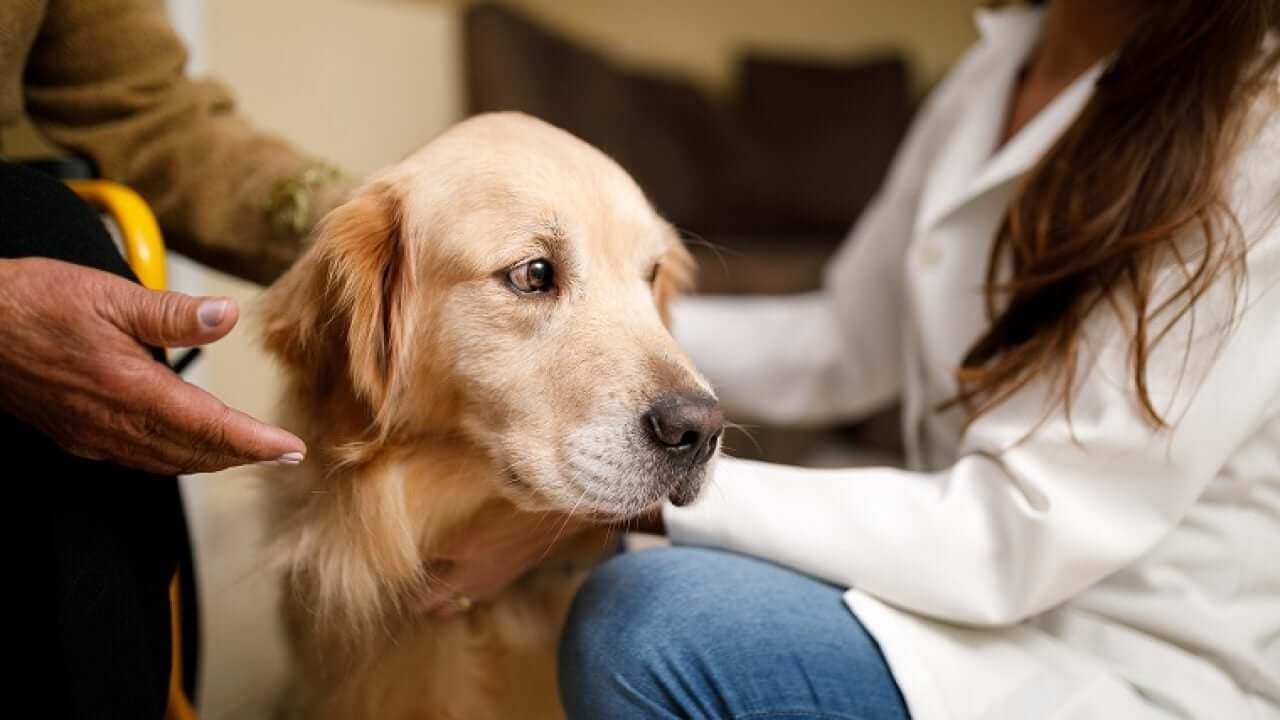Pet therapy is a method of treating and rehabilitating people with the help of animals! There are many interesting facts about the most common types of “animal therapy,” as well as attempts to adapt not only the familiar dogs, horses, dolphins, and leeches to animal therapy but also cats, raccoons, and other otters.
Good Dog Work
It all started with a dog. No one remembers the first dog that began to help people hunt, herd, guard the house, finally, just began to put his head on his master’s lap and look faithfully into his eyes.
Canistherapy, where the dog became the main source of positive emotions and therapeutic effect, was born in the middle of the XX century, as evidenced by photos and other documents, as well as the postulates of the nascent animal therapy formulated for the first time. The formulation in the 1960s was taken up by American child psychiatrist Boris Levinson, who observed the interaction between patients and his dog, a golden retriever.
Dogs had been used as doctors even earlier. In the eighteenth century in York City, England, in a hospital for the mentally ill, an experiment was conducted: they allowed patients to take care of dogs. This had a good effect and helped in the further treatment of people.
During World War II, people recovering from wounds in Red Cross hospitals were able to interact with dogs and cats without hindrance. Kind and affectionate animals and their sweet habits made the soldiers forget what they had suffered during the war and endure the pain more easily.
Now canistherapy has long been recognized as an effective and, most importantly, inexpensive way to rehabilitate children with severe diseases – autism, cerebral palsy and others. Also warm, friendly, furry dogs are wonderful guides for the blind.
Therapy dogs are able to determine if a person has cancer. How do they do it? Scientists believe that by the change in the smell coming from a person, the dog determines the disorder in the body. The human nose does not pick up such changes. The black Labrador retriever Marin, on the other hand, picked up so well that she was even cloned.
Queen on Horseback
Horses are healers, helping people with cerebral palsy, epilepsy, trauma, multiple sclerosis feel better.
Hippotherapy was helped into existence by the Danish Lis Hartel, the first woman to win a riding victory at the Helsinki Olympics in 1952.
Born in 1921, Lis was engaged in horseback riding from the age of five, which fascinated the girl. Nothing seemed to foretell trouble, but 23, Lis Hartel suddenly fell ill. The diagnosis was dreadful – polio. The young woman – then already a mother of a young daughter – lost the use of her legs and her hands were struggling to function. Doctors gave a dire prognosis: she would never walk again.
But Lis got on a horse and returned to the sport becoming an inspiration for betting company regulars. Her first lap on the horse’s back after the illness was the longest and hardest. She fell off the horse, but a few days later she returned to the stable and asked her friends to help her climb back into the saddle.
After nine years of hard training, Lis Hartell had almost completely regained leg mobility and then won Olympic gold.
Lis has been on the Olympic podium one more time, at the Stockholm Olympics. And she took part in many other competitions. But most importantly, she became the first hippotherapy instructor. Lis Hartell and the horses began to help people who were unable to move normally.
A Kind and Brave Dolphin
The dolphin has been sculpted in marble, rendered in painting, sung in poetry, immortalized in film. And all because since ancient times people noticed that the dolphin saves the drowning, isn’t afraid of people, lives on the border of the two worlds – water and air, and behaves as a reasonable creature.
In various worldview models, a dolphin has a place, if not divine, then certainly close to it. Maybe that’s why dolphin therapy is so popular, which helps with neurological and psychological disorders. However, this method of rehabilitation is expensive by today’s standards – more expensive than all other branches of animal therapy.
Many parents whose children have been to the dolphinarium and undergone a course of rehabilitation side by side with these mammals testify: dolphins are cool. They ride, play balls, let themselves be stroked, laugh back, and prance around like children.
They also remember people with whom they have made even the slightest emotional contact. Like real good doctors. And they don’t need cards – just a kind and brave attitude.



![Best Dog Breeds in India for Home [2022] Dachshund Price in India](https://petsyfy.com/wp-content/uploads/2022/07/Dachshund-Price-in-India-150x150.jpeg)


